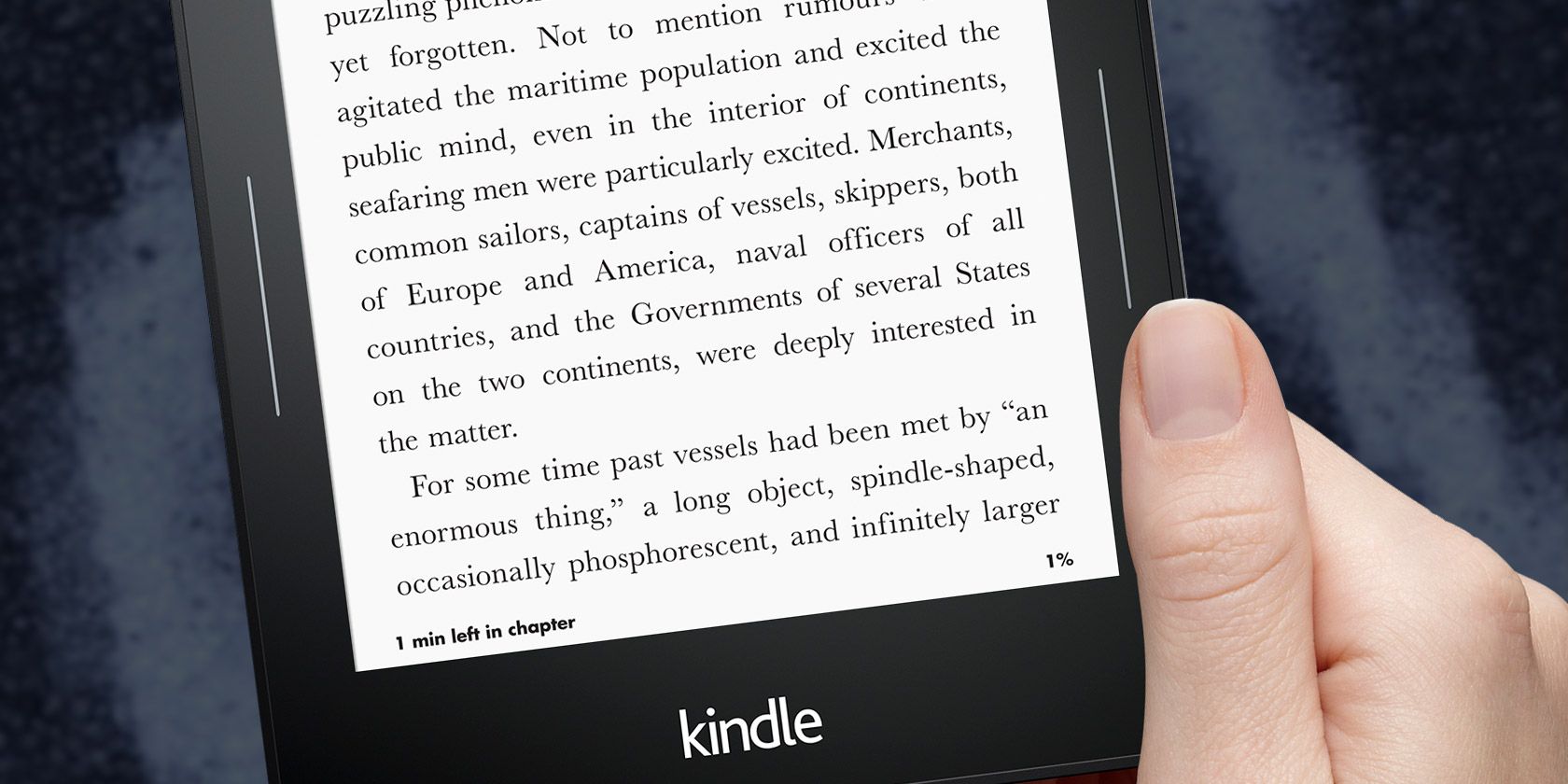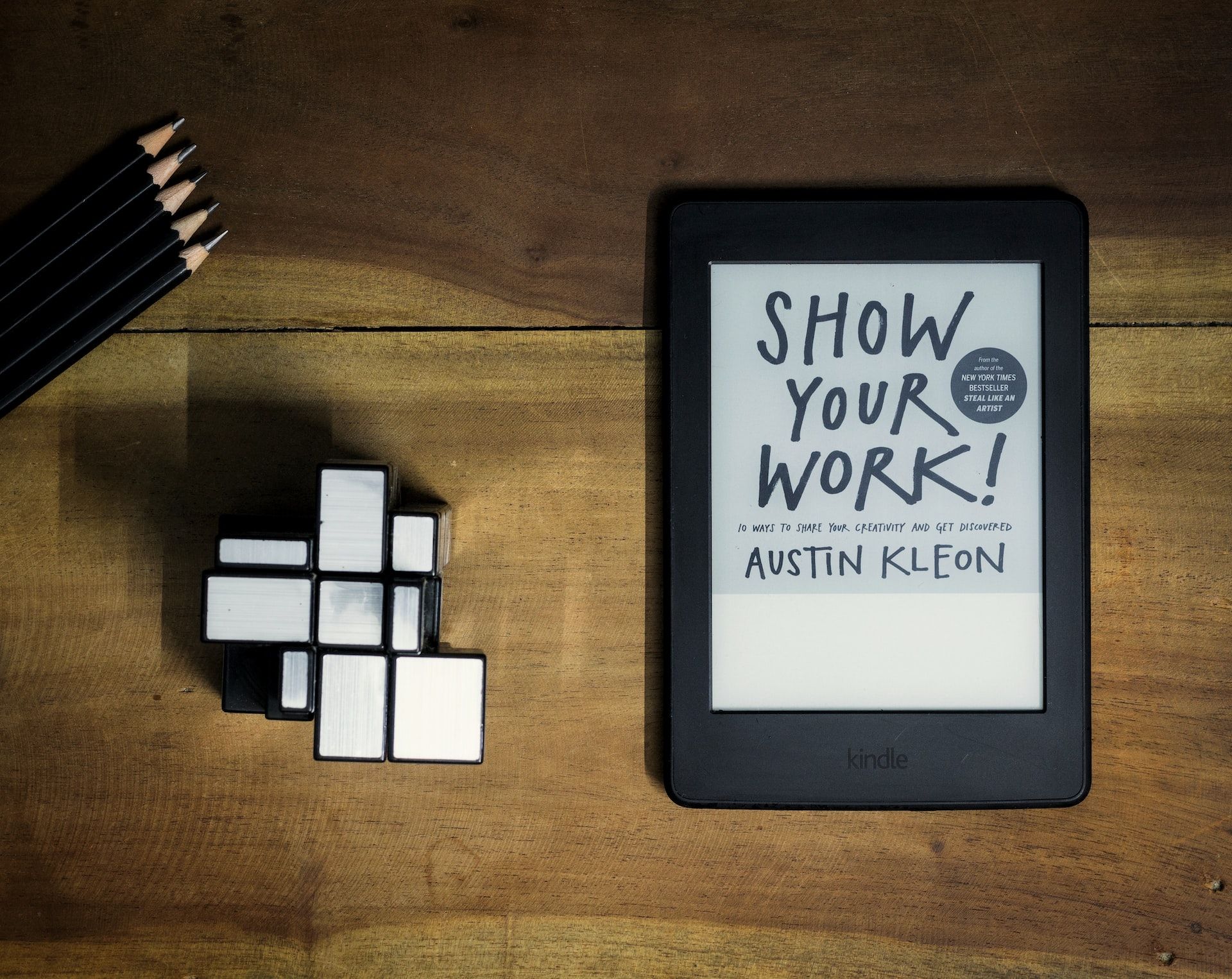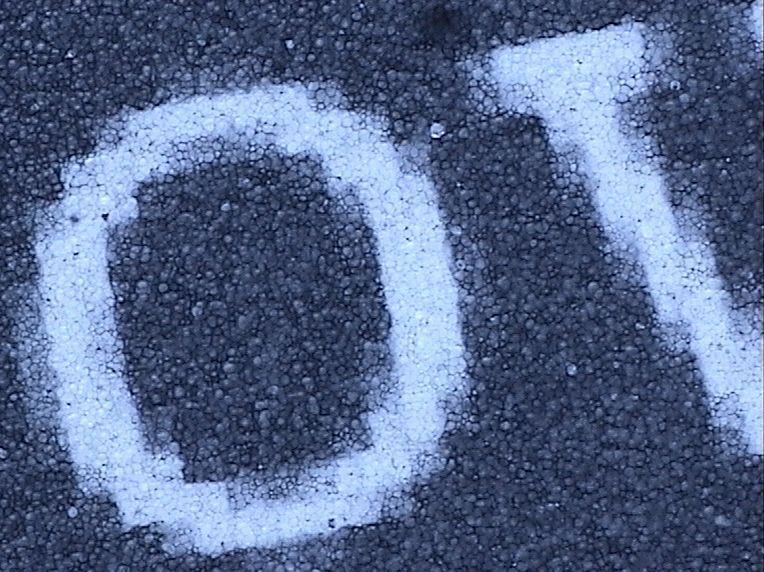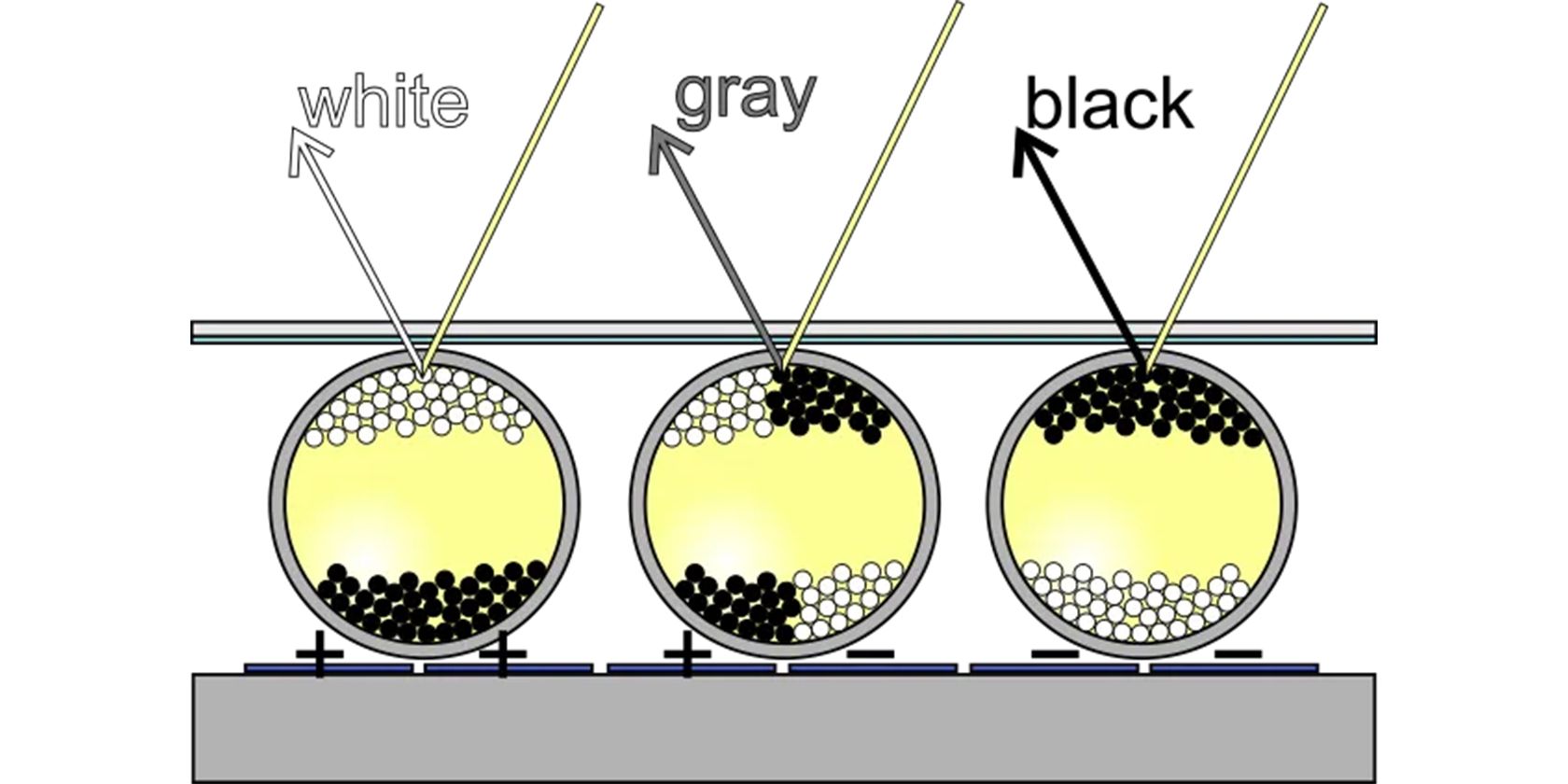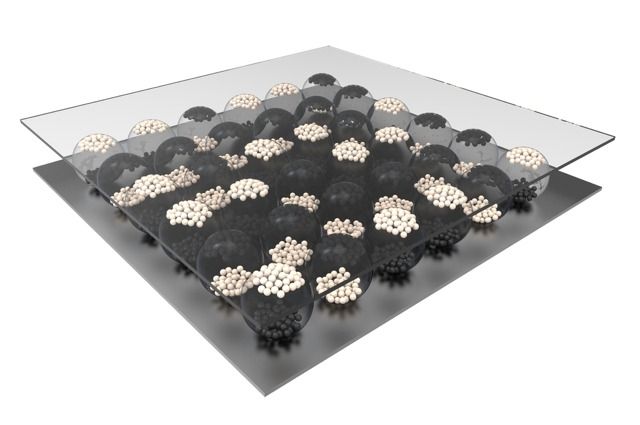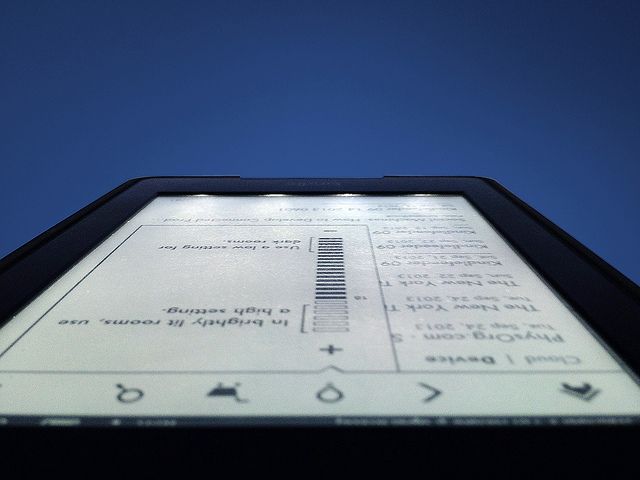E-readers, like the Amazon Kindle, can only do one thing but do it very well: they make reading digital books easy on the eyes, just like reading paper books. Their screens look just like paper, are viewable from any angle and in direct sunlight, and have a battery life measured in weeks.
But how do these e-ink screens work? What makes them so much better for reading? How do they manage such impressive battery life? And should you invest in one yourself? Here's everything you need to know.
What Is E-Ink?
E-Ink is a display technology that replicates the appearance of printed ink on paper. As such, most of these screens are only black and white. However, color e-readers are becoming increasingly popular. We've also seen E Ink (the company) launch the Gallery 3, a new e-reader featuring a faster color update time and improved screen resolution.
The first device to feature an E-Ink display was Sony's Librie, an e-reader released only in Japan in 2004. The main reason for its failure to gain widespread adoption was its high price tag and a file format with heavy DRM that made its e-books expire after 30 days.
It wasn't until Amazon released the Kindle in late 2007 that E-Ink really took off. Like the Librie, it had an 800 x 600-pixel display capable of showing four grayscale levels. The contrast wasn't amazing, but it allowed you to carry an entire library of digital books wherever you went, so it caught on.
E-Ink technology has come a long way since then. The eleventh-generation Amazon Kindle Paperwhite and the Amazon Kindle Oasis, the best Kindles from Amazon, now have high-resolution displays with up to 300 pixels per inch, 16 levels of grayscale, significantly increased contrast, improved font technology, and backlighting.
Of course, Kindles aren't the only devices to use E-Ink displays. There have been plenty of competitors over the years, including Sony, Barnes and Noble, Kobo, and Bookeen. Even some smartphones used this technology in the past. However, E-Ink displays are not limited to handheld devices alone. They are used in wearables such as wristwatches and ID cards, electronic signage, monitors, and smart cards.
But at the end of the day, e-readers have always been—and will continue to be—E-Ink's main purpose, with the most popular option being the Kindle and its variants.
E-Ink vs. E-Paper
Before we continue, we must distinguish between E-Ink and E-Paper. The two may sound the same, but there are some nuances you need to know.
E-Paper is any type of display that emulates the appearance of paper, and a few different technologies come under this umbrella. As a rule, E-Paper displays are reflective rather than emissive, which means they rely on external light sources rather than emitting their own light (like LCD or OLED displays).
In other words, E-Ink is just one specific kind of E-Paper technology.
The Pebble smartwatch is arguably the most popular example of an E-Paper display that doesn't use E-Ink. Instead, it uses an incredibly low-power liquid-crystal display with a reflective layer that looks like paper. Other technologies include Mirasol and Electrowetting, but these have generally been relegated to niche usage.
How Does E-Ink Work?
In an E-Ink display, a clear fluid suspends millions of tiny capsules filled with black and white pigment. The black pigment is negatively charged, while the white pigment is positively charged, and the fluid layer is sandwiched between two electrode layers divided into regions. Each region is one "pixel" in the display.
This whole process is called electrophoresis. Depending on how the electrode layers are charged, the ratio of pigment in each region changes, and that ratio is what produces varying degrees of grayscale on the screen.
So when the bottom electrode creates a positive electric field, the positively-charged white pigment is pushed to the top of the fluid layer, thus obscuring the negatively-charged black pigment that moves to the bottom of the fluid layer. Together, all the white pigment appears as a single white pixel.
Conversely, when the bottom electrode generates a negative electric field, the negatively-charged black pigment is pushed to the surface of the capsule, thus obscuring the white pigment. This results in a black pixel on display.
But when the bottom electrode creates both positive and negative electric fields, a mixture of black and white pigment is pushed to the surface of the capsule, resulting in a shade of gray that can be darker or lighter depending on how much white and black is on display for that pixel.
Unlike a liquid-crystal display, which requires constant power to keep the contents of the display on the screen. E-Ink only requires power to change the polarity of electrodes on a per-region basis. This means that your e-reader only uses power when it turns pages, and that's how an e-reader can last for up to one month on a single charge.
E-Ink devices can reduce power consumption even more by only changing the pixels that need to be changed per page turn. In other words, if a particular pixel stays black from one page to the next, nothing needs to change, so the reader does not use energy.
However, over time, some pixels may become stuck and refuse to change even with a new polarity, resulting in an imprint of text that stays even after the page has been turned. This phenomenon is known as "ghosting" and is usually fixed by a full-page refresh. That's why, every so often, the screen flashes completely black, then white, then back to the page you're viewing.
Also, E-Ink displays aren't confined to e-readers. It is possible to create your own fascinating projects with an e-ink display.
Advantages and Disadvantages of E-Ink
While E-Ink is an excellent display for many different applications, it's still not a universal solution for low-cost display needs. These are some of the advantages and disadvantages of E-Ink for different applications.
Advantages
1. Low-power: Due to how they work, E-Ink readers are compared to backlit displays; E-Ink devices consume approximately 40 percent less power
2. Less eye strain: While e-readers produce a fair amount of blue light, it is much less than what LCD and OLED displays produce. You can read for longer without experiencing eye strain on e-readers.
3. Paper-like experience: Nothing can replace the feel of a paper book, but e-readers come reasonably close, at least in appearance. This means that reading on one feels more natural than reading from a computer screen (even though both are digital).
Disadvantages
1. Sluggish refresh rate/updates: Numerous improvements have been made to e-readers over time, but they still take a long time to refresh compared to LCD and LED devices. This makes them unsuitable for playing animations and videos. Nevertheless, new E-Ink devices, like the Kaleido 3, are said to be responsive enough to play fast animations and high-quality videos.
2. Price: E-Ink displays are pretty pricey compared to LCDs, especially as they increase in size and resolution. This is because E-Ink displays are produced by a limited number of manufacturers who cannot take advantage of economies of scale.
While a standard e-reader such as the Amazon Kindle Paperwhite costs much less than, say, the Samsung Galaxy Tab, the latter can be used in multiple applications, unlike the Kindle, which can only be used to read e-books. This means that e-readers remain a luxury purchase for most people.
What About Reading in the Dark?
E-Ink's reflective nature makes it perfect for reading in bright light, but because it can't emit any light by itself, it can't be read in the dark. In earlier models, reading in the dark meant using a lamp or some other external light source, just as you would with a regular paper book.
Nowadays, upmarket e-readers have a built-in lighting feature that lets you read in the dark. Lighting is also useful during the daytime when you need to adjust contrast.
Rather than using a backlight, most e-readers actually use LEDs mounted along the inner sides of the display that shine light across a thin layer of translucent plastic. This distributes the light evenly across the surface and makes the entire page legible.
Long story short, this means you can read in the dark without straining your eyes as you would on a light-emitting screen like your smartphone or tablet.
Of course, extra energy is needed to power these built-in lights, so this will noticeably reduce the overall battery time of the device. Instead of four weeks per charge, you might get just around two weeks.
Start Using E-Ink Right Now
E-Ink is the technology that gives your e-reader fantastic viewing angles, readability in bright sunlight, and incredible battery life. With added lighting built into the device, it even lets you read at night without ruining your eyes.
Despite the limitations, E-ink has come a long way over the years and is now available on many devices, from e-readers to multimedia tablets. In the long run, purchasing an e-ink device is an investment that pays off over time.

